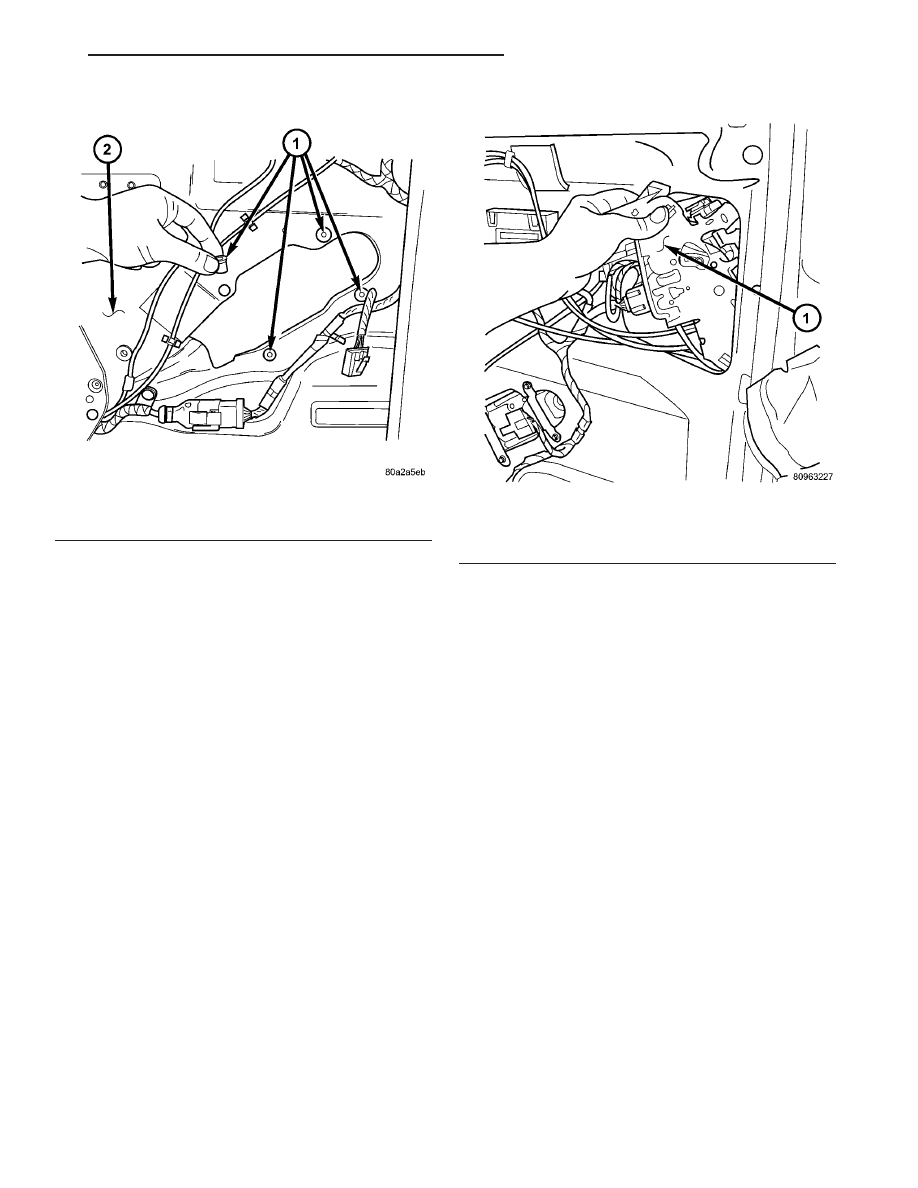Chrysler RG Voyager. Manual - part 744

POWER SLIDING DOOR ADJUSTMENT
In order for the power sliding door system to func-
tion
properly
the
door
must
move
freely
and
smoothly. The power sliding door system can accom-
modate for some minor changes in the effort required
to move the door. However, in extreme conditions the
door may need to be mechanically adjusted for proper
fit. (Refer to 23 - BODY/DOORS - SLIDING/SLID-
ING DOOR - ADJUSTMENTS).
If a problem exists with the power sliding door and
it is suspected to be extreme effort, check for proper
door alignment and adjustment first, then check the
door tracks and drive unit for free manual operation.
(Refer to 23 - BODY/DOORS - SLIDING/SLIDING
DOOR - ADJUSTMENTS) for detailed instructions.
LATCH
DESCRIPTION
One power latch is used for each power sliding
door. The latch is located on the trailing edge of the
sliding door assembly (Fig. 3). This power latch
assembly is comprised of many different components
which have the ability to perform the power cinch,
release, lock, unlock and safety related operations.
These components are the door latch, lock/unlock
actuator, cinch/release actuator and child lockout,
pawl, ratchet and handle switches. The pawl and
ratchet switches are used to indicate the primary and
secondary latched positions. The cinch latch also pro-
vides a connection point for the interior handle, exte-
rior handle and hold open latch cables. If any of the
components of the latch assembly are inoperative the
complete power latch assembly must be replaced.
OPERATION
The power latch performs the same operation as a
full manual door latch as well as power cinch,
release, lock and unlock operations. The power latch
mounted actuator cinches the door closed and latches
it in its primary latched position. During a power
close cycle, the power cinch actuator will not operate
until the power sliding door has reached its second-
ary latch position (determined by pawl and ratchet
switches). During a power open cycle, the power
release actuator will stop once the sliding door has
moved from the primary latch position.
The power latch uses inputs from the lock/unlock
actuator, power sliding door control module and child
lockout, pawl, ratchet and handle switches to provide
safe power cinch and release operations. (Refer to 8 -
ELECTRICAL/POWER DOORS - OPERATION) for
additional information.
REMOVAL
(1) Disconnect and isolate the battery negative
cable.
(2) Remove the appropriate side door trim panel,
(Refer to 23 - BODY/DOORS - SLIDING/TRIM
PANEL - REMOVAL).
Fig. 2 SIDE DOOR MOTOR PUSH-PIN GROMMETS
1 - PUSH-PIN GROMMETS
2 - SIDE DOOR INNER PANEL
Fig. 3 REMOVING/INSTALLING POWER LATCH IN
SLIDING DOOR
1 - POWER LATCH ASSEMBLY
RS
POWER SLIDING DOOR SYSTEM
8N - 49
POWER SLIDING DOOR SYSTEM (Continued)